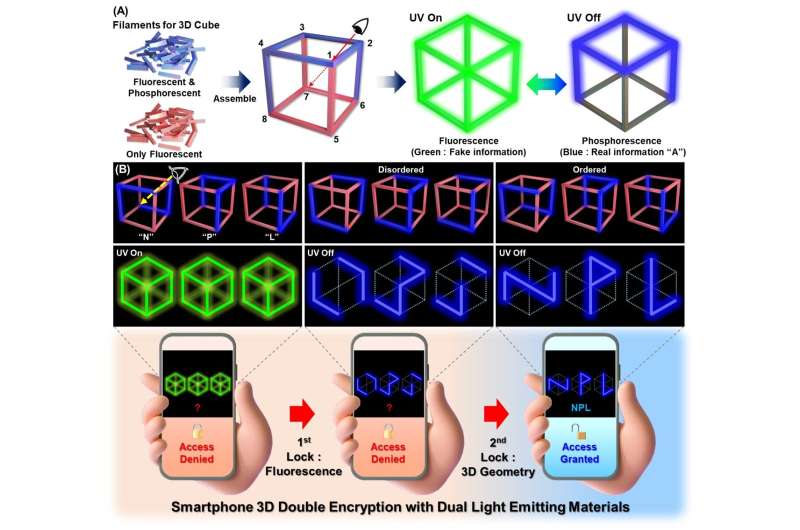by Light Publishing Center, Changchun Institute of Optics, Fine Mechanics And Physics, CAS

Over the past decade, there has been remarkable advancement in state-of-the-art technologies, leading to a profound alteration in the way individuals interact and exchange information, resulting in the emergence of a “hyper-connected community.” Nonetheless, this interconnected environment has led to a gradual decline in the security of information, encompassing vital aspects like privacy and secrecy, which people highly value.
Consequently, it becomes imperative to prioritize the safeguarding of sensitive data through an encryption framework. As a response, optical encryption techniques have seen extensive progress and deployment, offering solutions for preserving the confidentiality of information.
In a paper published in Light: Science & Applications, a team of scientists, led by Professor Cheolmin Park from Nanopolymers Laboratory, Department of Materials Science and Engineering, Yonsei University, Korea, Professor Seung Soon Jang from Computational NanoBio Technology Lab, School of Materials Science and Engineering, Georgia Institute of Technology, US, and their research team have developed three-dimensional (3-D) volumetric optical encryption with moldable and printable dual-light-emitting fluorescent–phosphorescent materials.
They presented fluorescent perovskite nanocrystals embedded in metal–organic frameworks (MOFs) designed for phosphorescent host–guest interactions. When guest molecules for room temperature phosphorescence were securely fixed within each periodic cavity of a molecular framework, the host–guest pairs were rigidified with fixed molecular separation, owing to the crystalline structure of the MOFs, resulting in stable room temperature phosphorescence without additional processes.
As such, their dual-light-emitting materials efficiently conceal actual information with transient phosphorescence behind fake information written with fluorescence under UV exposure. Moreover, a 3-D cubic skeleton is developed with the dual-light-emitting powder dispersed in 3-D-printable polymer filaments for volumetric dual-pattern encryption.
This method and technique will open new avenues for developing room-temperature multi-light-emitting materials and a strategy for multidimensional information encryption with enhanced capacity and security.

Summarizing their research, the scientists say, “We design a fluorescent-phosphorescent dual-light-emitting materials for optical information encryption. Utilizing dual-light-emitting materials that exhibit distinct and individual fluorescence and phosphorescence emissions, 2-D pochoir pattern encryption effectively conceals real information through transient phosphorescence, while fake information is presented through fluorescence.”
“Furthermore, a 3-D cubic skeleton is developed with the dual-light-emitting powder dispersed in 3-D-printable polymer filaments for volumetric dual-pattern encryption. Achieving viewing-angle-dependent encryption was successfully demonstrated using cube-type skeletons constructed from polymer composite filaments, employing both a standard smartphone camera and software.”
“Since our polymer composites with dual-light-emitting materials is readily moldable with conventional 3-D printers, a high-security and cost-effective optical encoding/decoding system can be achieved,” they added.
“The presented technique can be used to develop solid-state multiwavelength light-emitting materials suitable for a variety of wearable, patchable, and stretchable sensors and displays. This breakthrough could open a new venue for a high-security information encryption technique suitable for personal biodata protection technologies, which are rapidly progressing owing to human–machine interface research,” the scientists added.
More information: Jin Woo Oh et al, Dual-light emitting 3D encryption with printable fluorescent-phosphorescent metal-organic frameworks, Light: Science & Applications (2023). DOI: 10.1038/s41377-023-01274-4
Journal information: Light: Science & Applications
Provided by Light Publishing Center, Changchun Institute of Optics, Fine Mechanics And Physics, CAS

